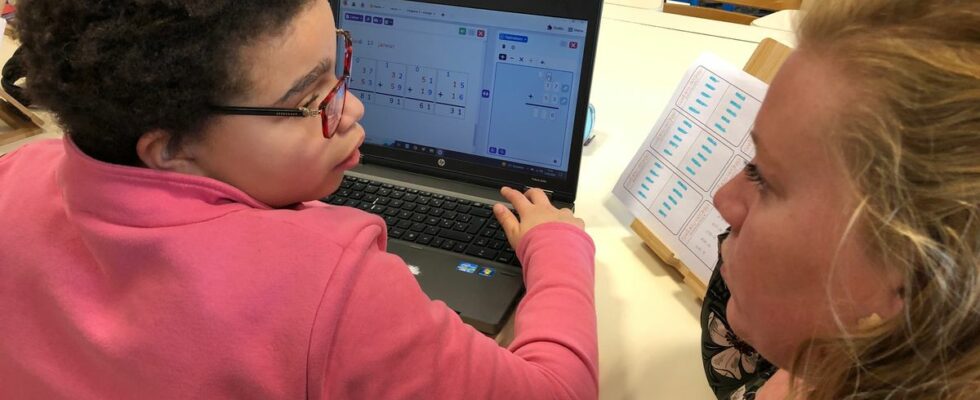“These children are not handicapped in life, but handicapped in school. As soon as he is asked about the subject, the writer Pierre Lemaître delivers this definition of “dys”. The former Prix Goncourt knows what he is talking about since his daughter is dyslexic, that is to say, she sometimes reverses letters or syllables.
Dyslexia, dyspraxia, dysorthography… All these neurological learning disorders terribly handicap some children who, moreover, have real intellectual abilities. “However, these abilities, they have great difficulty, alas, in expressing them at school. They have to make more effort than the other students, ”underlines Thierry Paluch, pole director at APF France Handicap, in the North. And according to official estimates, these students who suffer from learning disabilities – often synonymous with school failure – represent between 6 and 8% of the French population.
Ease of handling
For them, the horizon will perhaps clear up a little. A start-up, based in Lille, took the measure of these dysfunctions to design innovative software. Nothing revolutionary in terms of pedagogy, but ease of handling insofar as the software includes 24 teaching and compensation tools. “It’s a kind of digital school notebook”, summarizes François Billioud, co-founder of the start-up Cantoo – translation: “we can also” – who has been working on this project for more than ten years.
The idea is to use a single interface for all uses: reading, writing, calculation, science, memory or work organization. “For reading, for example, it goes from voice recognition to the system of colorization of syllables to help learning, specifies François Billioud. You can also space the words to see them better. »
“Cantoo’s innovation is simplicity. We were already using software, but the management of the different files was very complicated and that could discourage the child”, testify Emmanuelle Smoch and Louise Labbe, two occupational therapists from the Institut motricité Fougerousse, in Douai, where this software has been tested for several month.
More than ten years of development
Thus, over the course of experimentation and feedback from some 6,000 users, the software has become increasingly intuitive and efficient. However, this beautiful story was born almost by chance, in 2009, with a simple student project at Centrale Lille.
A specialized educator and a teacher offered to work on software to support young people with dyspraxia in learning math, a fine motor problem that hinders the ability to write with a pen. “The project interested me in its IT dimension. It was my field and, at the time, there were still few projects of this type,” recalls François Billioud.
The latter is quickly joined by Minashe Selvam, a Brazilian student who also passed through Centrale Lille, but who displays different motivations. “One of my cousins had a dys problem that was never diagnosed,” she explains. It was very difficult for our family to live. I understand all the better the distress of parents who find themselves helpless by this situation and I am delighted to try to find a solution. »
Fundraising of one million euros
Today, the Cantoo software must be developed in forty schools spread over twelve departments. Thanks to a fundraising of one million euros in December, the start-up – which employs nine people and works with a dozen service providers – hopes to broaden its scope of action in the months to come.
Especially since this “digital school notebook” is also suitable for children affected by autism or attention disorders. “The ideal would be for all children to be able to use it, without any distinction,” says Thierry Paluch, from France Handicap. Because, according to the Minister of National Education, more than a quarter of students do not have the expected level in French when entering college and they are almost a third in mathematics.

